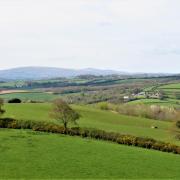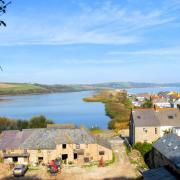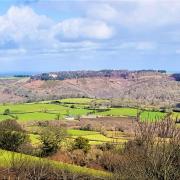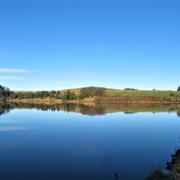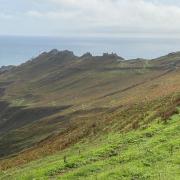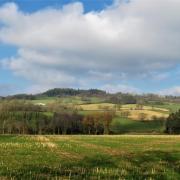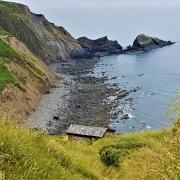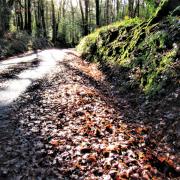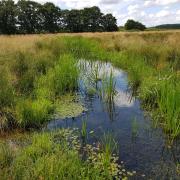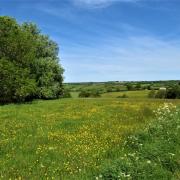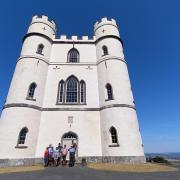A long-abandoned canal in North Devon is slowly giving up its secrets, writes JO STEWART-SMITH

I first heard of the Rolle Canal, linking Torrington to the sea, about five years ago on a boat trip along the river Torridge. Dave Gabe, our skipper, pointed through some trees and spoke of an ancient sea lock, although we were nearly three miles inland from Bideford.

I imagined a canal, brim full of water, slipping silently through the woods. Dave shattered this image, saying the canal had been destroyed by the railway over 140 years ago.
But for the past ten years, members of the Rolle Canal Society have been on a Boy’s Own adventure, hacking through vegetation, crawling through tunnels, slowly revealing the secrets of the canal. Now thanks to North Devon’s Biosphere Life’s Journey project which has opened up viewing points along the Tarka Trail, it’s an adventure anyone can take. I was treated to a guided tour courtesy of Anthony Barnes, Barry Hughes and Adrian Wills.
We met at the Puffing Billy, just outside Torrington and one of several stops on the Tarka Trail where you can hire bikes. About 400 metres up the trail, towards Bideford, bike racks mark the entrance to a new permissive path which follows the footprint of the canal.
I was searching for the canal when I realised I was staring at it, running below us, cut like a long, narrow terrace into the wooded hillside. We were walking on the old tow path, once trod by weary horses pulling a string of ‘tub boats.’
From the 1700s, packhorses carried sand (full of crushed shells) from North Devon’s beaches inland to improve the quality of the acidic soil for farming. The journey was slow and arduous so in 1823 Lord Rolle tasked engineer James Green to build the canal.
The tubs carried limestone which was burnt in limekilns and spread on the land. Barry told me that the canal originally stopped at Torrington. But the townsfolk were worried about the competition and refused the sale of ‘manufactured goods’. So Green continued digging, taking the canal to Rowes Moor (now Rosemoor) and on to Darkham Weir, six and a half miles in all. Ball clay from quarries like Peters Marland headed back to sea and across to the Potteries.
The path ends at a Roving bridge near Beam Weir. At this point, the canal and the river swapped sides, so the horse on the tow path had to change sides too. A roving bridge is designed so that the towing rope doesn’t need to be unhitched. I stared at the bridge and decided they had to unhitch the rope from the horse’s headcollar. “No,” Barry explained, “the horse crosses the bridge but comes back down the same side, before going under the bridge.” Amazingly, this was simply another bridge on the Tarka Trail, until a society member spotted the rope marks worn into the stone. I was beginning to understand why the adventure is so addictive. It’s not just about hacking through undergrowth or even tracking evocative place names: Annery Kilns, Dock and Quay cottages in Weare Giffard or Taddiport. A wooden rail found in the river bank probably carried the lime wagons. A scrap of rusting iron left in a spoil heap was surely a rail from the canal’s unusual ‘inclined plane.’ Barry found a long metal pole with a looped end, hidden in some bushes. I was in the zone and excited. I thought the loop was designed to take a horse’s rope. Barry wasn’t giving anything anyway.
We reached the famous five-arched aqueduct which carried the canal over the river Torridge: the same canal bridge under which Tarka, the otter, was born and frolicked in the shallows. There’s a wonderful view of the aqueduct from the Tarka Trail and it’s still one of the best places to spot otters today. Next stop: the inclined plane, apparently built to save water. Surely in Devon, we’re not short of water? Tony laughed as he showed me part of the stone vault which housed the giant water wheel, “it’s all about having water in the right place”.
From the inclined plane the canal ran to Torrington without the need for locks or planes, so when the railway was built the canal provided the perfect bed.
Today, this same flat bed makes an easy cycling trail. So the Tarka Trail runs along the old railway or the old canal, which is why the canal can never be fully restored and why a canal, full of water, will remain a figment of my imagination.
You can hire a bike from the Puffing Billy or East-the-Water or walk the Tarka Trail to explore this ancient transport artery. Monthly guided walks of the canal begin in May. For more information go online to therollecanal.co.uk





